The History of Hong Kong Action Pt. 5 – 1980: New Wave, Cinema City, Jackie Chan & John Woo
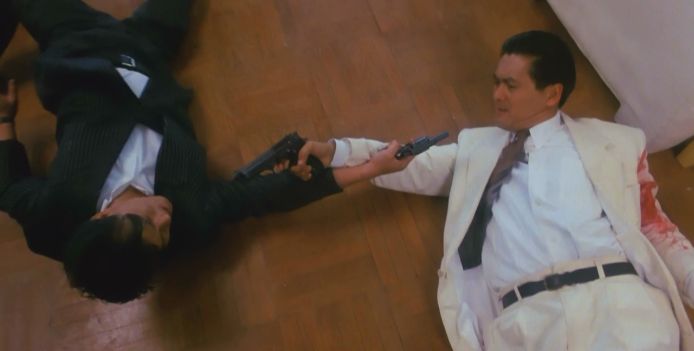
Massive film lover. Whether it's classic, contemporary, foreign, domestic, art,…
The Hong Kong New Wave of the late 1970’s had diverted, and the benefit of this diversion was the short-lived, but prolific Cinema City in 1980. Founded by comedians Alan Mak and Wong Jin, Cinema City would be the jumping point for some of Hong Kong’s most prestigious directors. John Woo, Ringo Lam, Tsui Hark, Eric Tsang, Ronny Yu, and Johnnie To found their way into the film business through Cinema City; these filmmakers would make some of the most innovative and energetic films ever.
Their films, made from the genesis of Cinema City to the mid to late nineties, were electrifying and uniquely entertaining. Some critics have blamed this highly entertaining era lacking substance and artistic vision. They may not have the rigorous social context of the new wave films but productions from Cinema City were always entertaining. What makes Cinema City so special is that it absorbed the artful filmmakers that were key figures in the Hong Kong New Wave, and these directors would go on to produce fast paced, commercially appealing films. Although the films from Cinema City were seen as popcorn movies, there is a layer of political, and sociological subtext that made their material special.
A Better Tomorrow for Hong Kong’s Action Cinema
Ironically, John Woo, the internationally acclaimed action director, was once known as the “new king of comedy” in Hong Kong, and the films he directed for Cinema City were screwball comedies. In 1986, Tsui Hark would produce John Woo’s seminal action masterpiece A Better Tomorrow. Woo’s expertly crafted ballet of violence went on to become one of the directors (and studios) most popular films, and won the Hong Kong Film Award for Best Film and Best Actor for its leading man Chow Yun-Fat.
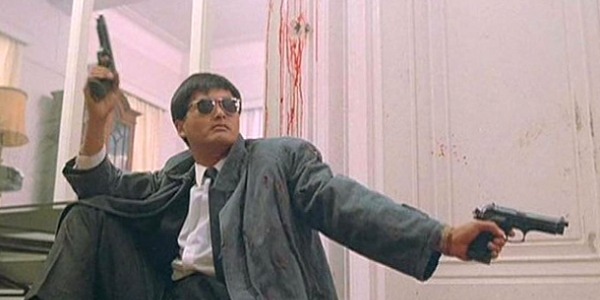
A Better Tommorrow is an amazing film. John Woo integrates his fascination with themes of brotherhood and honor that were central to the films of Chang Cheh, Chow Yun-Fat’s character is inspired by Alain Delon’s performance in Jean-Pierre Melville’s Le Samorai. With its modern look, stylized violence and great performances from Chow Yun-Fat, Ti Lung and Leslie Cheung, the film gave John Woo and Tsui Hark creative license to step outside the zany comedies Cinema City had been producing until that point.
Magic Makeover: Tsui Hark Reinvents Wuxia Action
Tsui Hark’s epic, special effects-laden martial arts fantasy, Zu: The Warriors From the Magic Mountain, his fourth and arguably his most important film. For his career as a filmmaker and the growth of Hong Kong’s film industry Zu: The Warriors From the Magic Mountain was immensely popular and revolutionary. Without a pause to take a breath, the film hits the ground running: Tsui Hark blends martial arts, horror, fantasy, comedy, and political allegory in the form of pure escapist fantasy. Zu: Warriors From the Magic Mountain is entertainment at the highest level.

Although the comedies of Cinema City might not be the most memorable, they were still very entertaining, and fast-paced. This comedic tone can be seen throughout some of the studios best films and in the same year as A Better Tomorrow, Tsui Hark directed Peking Opera Blues. For whatever reason the film hasn’t seen distribution in the US, and it’s a shame because Peking Opera Blues might be one of the most exciting adventure films ever made. It might not have the level of trend setting violence of A Better Tomorrow, but Peking Opera Blues delivers even more action and adventure in the spirit of Raiders of the Lost Ark, with even more energy than Spielberg’s film.
In 1981, Cinema City cut their teeth turning out slapstick comedies, and screwy ghost stories. Although their reputation was growing with the Aces Go Places, and Better Tomorrow films, the style and pacing of these films can be seen in nearly all the films that would follow throughout the rest of the eighties. However, Cinema City didn’t specialize in just making comedies and adventure films. There were a few titles to come from the studio that retained the gritty realism characterized in the films of the new wave movement that occurred in the late 1970’s.
Serious Side of Hong Kong Action: Ringo Lam
In 1987 Ringo Lam would direct two films that would be a change of pace from the lively adventures that were prevalent at that time. City on Fire (that would be the inspiration for Tarantino’s Reservoir Dogs) and Prison on Fire are certainly a departure from the madcap comedies that Cinema City was producing. Both films star Chow Yun-Fat and carry a much more serious and weighty tone than John Woo’s bullet ballets.
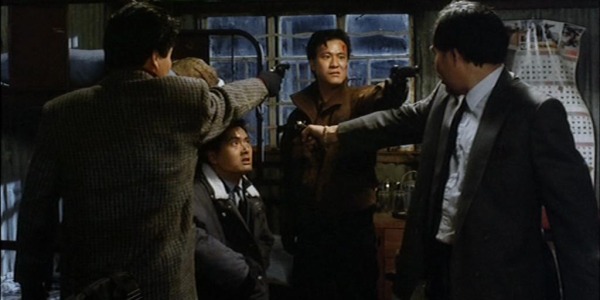
Compared to the other films from Cinema City Ringo Lam’s movies have a slow-burn narrative, and its stripped-down style form a different type of film. The excessive style of the films of the 1980’s was entertaining but overloaded with everything from slapstick, action and the kitchen sink. A sequel followed Prison on Fire (Prison on Fire 2), and School on Fire would complete Lam’s “on fire” trilogy, which had the same style and tone of his previous films. While Ringo Lam crafted a more pure form of dramatic cinema another young director would go on to become a paramount director in Hong Kong, as well as Mainland China. Johnnie To would direct a number of innovative action films, and is a very active filmmaker to this day.
Humble Beginnings: Johnnie To
Commonly referred to as “The Jerry Bruckheimer of Hong Kong” Johnnie To started directing films for Cinema City in 1987. His fourth film, co-directed with Andrew Kam, The Big Heat, was a grim and ultra-violent cop movie. An interesting if sometimes troubling film, it introduced the director and as a first action film it is a formidable effort. The emphasis on the gritty side of police work is the standout characteristic of this film, the opening shot is a nightmare sequence where the leading character imagines a drill going through his hand. At the films finale there’s a shootout in a hospital; unlike John Woo’s Hard-Boiled no one is spared, even children in wheelchairs are cut down by the flying bullets.
By the end of the seventies, Jackie Chan’s partnership with director Lo Wei was going nowhere. Chan’s creativity suffered as Wei kept trying to smash a square peg into a round hole as he was trying to sculpt Jackie Chan into the next Bruce Lee. It wasn’t until the classic Drunken Master that people recognized how great Chan’s talents are, and what he could accomplish with Yuen woo-Ping. Ironically, Chan had spent the earlier part of his career getting beat up by Bruce Lee, and after his death spent his time trying to imitate him. Success had eluded Chan for too long, and his breakthrough with Drunken Master was well-deserved. The eighties would be good for him, as well as his two “brothers” from his days in the Bejing Opera: Yuen Biao and Sammo Hung.
Jackie Chan & The Three Brothers
Although Jackie Chan was a household name by the late nineties, he was breaking into the U.S. market as early as 1980 with films like Battlecreek Brawl, and Cannonball Run. What would follow would be a string of classics, featuring Yuen Biao, Sammo Hung, with Chan and Hung featuring as directors as well as performers. Sammo Hung and Yuen Biao might reside in Chan’s shadow but neither of them are short on talent as they’re great martial artists and performers.
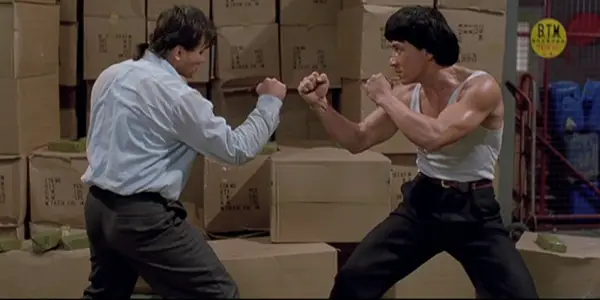
Sammo Hung‘s directorial efforts starring the three brothers are some of the funnest of the lot. His Project A, frequently regarded as one of the best in Chan’s career, marked a turning point in martial arts cinema. Abandoning the “straight” kung-fu of blows parried back and forth, for daring stunts, and creative use of objects in place of weapons, something we see throughout Chan’s subsequent films.
Dragons Forever (arguably one of the best and also directed by Hung) is a great film from the three-brothers: fast paced fights, action, comedy, and one of the greatest finales in Kung-fu cinema; Yuen Biao’s catwalk fight scene and Chan’s rematch with real-life kickboxing champion Benny “The Jet” Urquidez are exemplary. Action packed, sentimental, romantic and consistently funny, the three brothers are wonderfully entertaining in all of the films helmed by Sammo Hung, and helped bring kung-fu cinema out of the temples of Shaolin and into the streets of Hong Kong.

After another unsuccessful journey into American films (The Protector, a poor attempt to mold Chan into a hard-boiled cop) Chan once again would have to do things his way. Directing and starring in his 1985 film Police Story Jackie Chan went from superstar to sensation. Police Story isn’t a great kung-fu movie, or a great cop movie it’s a great action film, with more memorable moments than any other film of its genre. Highlights include a car chase that destroys an entire shanty town, Chan hanging from a speeding bus by an umbrella, and a shopping mall showdown that has to be seen to be believed.
Jackie Chan had turned into a superstar, and it’s no wonder why. After Police Story he would cross another frontier in his career with his eloquently made action-filled rendition of Frank Capra’s Lady for a Day in 1989. Miracles, aka, Mr. Canton and Lady Rose (uninspired US title Black Dragon) would be one of Chan’s greatest achievements as an actor as well as director, it’s even rumored that Chan shed a tear during the films opening screening. Despite its poor US release, Mr. Canton and Lady Rose is a wonderful film and deserves more exposure.
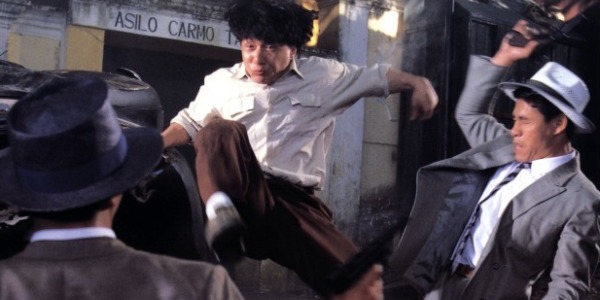
Best of the Bullet Ballets: The Killer
Once again, John Woo would create another spectacular bullet ballet towards the end of the eighties with his classic film The Killer. The explosive action in the film would exceed the expectations of audiences abroad as well as in its native land. Starring Chow Yun-Fat and Danny Lee, The Killer does everything a great action movie should. It is loaded with non-stop action, sure; it’s violent but never gratuitous. The Killer isn’t just a bloodbath, its great story was inspired by Jean Pierre-Melville’s Le Samorai. It’s grade A pulp, with the honed pageantry of violence John Woo had perfected at this point in his career. The Killer is probably the most well-known action films from Hong Kong and for good reason: it’s the perfect action movie.
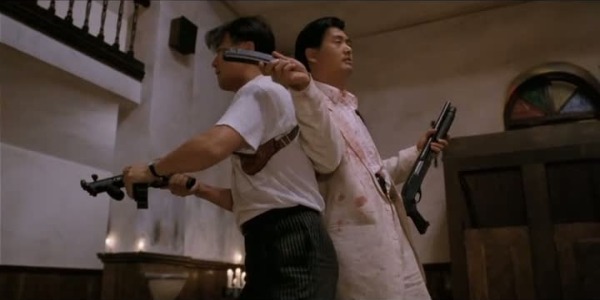
While some careers were in full blossom, newcomer Wong Kar-wai directed his first feature film: As Tears Go By. Although this film might be considered one of his “lesser” movies it’s a charmingly uncomplicated piece of young gangsters, with the directors eye for off-kilter romance. The eighties was a busy time for Hong Kong’s action cinema. Kung-fu had undergone an entire revolution from period drama’s to contemporary action. The Hong Kong new wave started the careers of some terrific filmmakers and every genre was pushed to new and exciting heights.
Next week, we’ll move on to Hong Kong in the nineties, during which the Handover of Hong Kong happened, which proved to be significant for Hong Kong’s cinema. Stay tuned!
If you have any questions, feel free to ask below!
(top image: The Killer (1989) – source: Film Workshop Media Asia)
Does content like this matter to you?
Become a Member and support film journalism. Unlock access to all of Film Inquiry`s great articles. Join a community of like-minded readers who are passionate about cinema - get access to our private members Network, give back to independent filmmakers, and more.
Massive film lover. Whether it's classic, contemporary, foreign, domestic, art, or entertainment; movies of every kind have something to say. And there is something to say about every movie.













